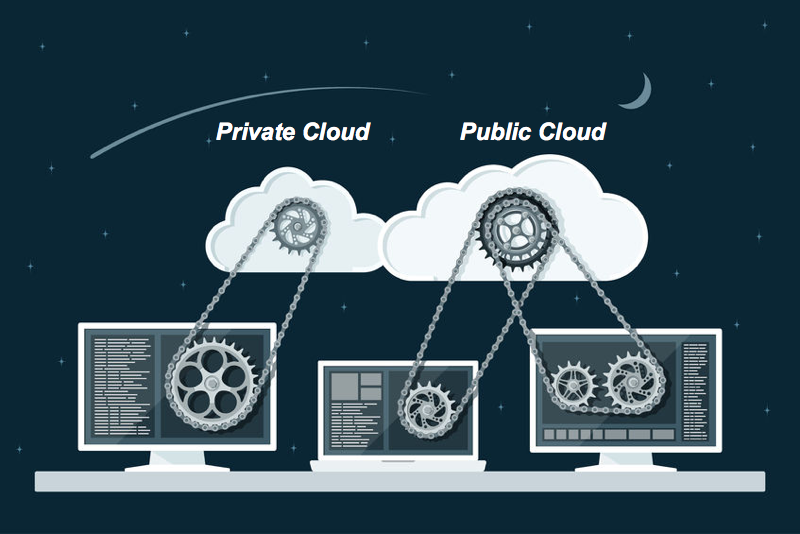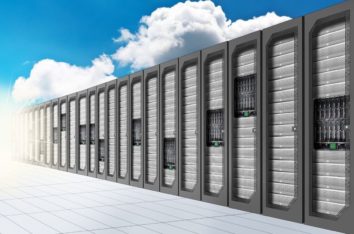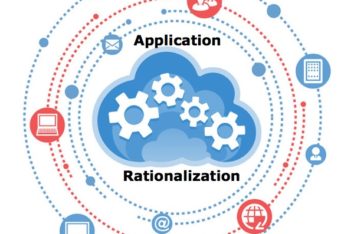Cloud Technology Insights
How to Get Your CEO to Say Yes to Cloud Migration
When you ask most people about “the cloud” the answer you’ll typically receive often describes what is more specifically known as a “public cloud.” So what are these two digital entities and why do their differences matter to your business?
First, though, let’s quickly talk about the cloud in general because, although many people casually toss the term around in conversation, surprisingly few can accurately explain what the cloud really is. The cloud, quite simply, is a network of servers that can perform a variety of IT functions offsite. In the business world, that might mean running a company’s software and/or managing its data in a secure datacenter via the Internet. For those firms, applications and data no longer reside on computers or hard-wired servers located on-premise – they’re stored, managed, and maintained on servers elsewhere.
The risks and rewards of public clouds
As we mentioned above, public clouds are the most recognizable cloud computing model, used by consumers and commercial ventures alike. They offer unbeatable economies of scale because physical and digital resources are shared by a large number of individuals and organizations in a virtualized environment accessible via a public network.
Public clouds offer unbeatable scalability and flexibility. A growing number of major nationwide cloud data centers provide almost limitless data storage and bigger public pipes mean more nimble cloud computing -- network bandwidth and capacity can be rapidly scaled up or down to meet demand and optimize productivity.
A wide range of cloud service providers (CSPs) offer an equally wide range of services via public cloud, including software-as-a-service (SaaS), platform-as-a-service (PaaS), and infrastructure-as-a-Service (IaaS) – all easily accessed by a variety of internet-enabled devices.
Public clouds are highly cost-efficient too, as underlying resources are shared across cloud services and by all the users. The take-out menu of available services typically utilize a pay-as-you-go model so you pay for only what you need and use, when you use it. Best of all, software, hardware, and infrastructure costs are the responsibility of the cloud provider.
All these public cloud rewards come with some risk, though.
Ceding management of your data storage and apps to a third party puts limitations on your control of your IT environment and can increase the risk of security issues. Your IT ecosystem now has more touch points internally and externally, with a greater risk of unwanted intrusion. And cloud service providers aggregate data from hundreds or even thousands of businesses in one entity, making them a higher-value target for cybercriminals.
If you’re in an industry that regulates data security, compliance may become an issue; for example, healthcare providers are required by HIPAA to protect patient information or face severe penalties.
Even the regular maintenance typically performed by CSPs can be a double-edged sword. While regular upgrades and patches may seem like a good idea, there are times when enforced changes can be problematic. If you have customized software or unique computing requirements, unexpected enforced changes by your CSP can suddenly put your operations or your data at risk.
Still the benefits of greater cost efficiencies, improved flexibility and scalability, and high reliability can make the public cloud a solid foundational choice for your IT environment. What's more, cloud service providers have made significant investments in cloud security to mitigate these risks. For example, here is a whitepaper about Azure Cloud Security. Here is a link to Amazon's cloud security page.
What you need to know about private clouds
Of course, the key word here is “private.” This cloud model features a separate, secure cloud ecosystem that provides computing power within a virtualized environment powered by a physical infrastructure that’s accessible only to a single organization. So although it’s a cloud environment, it’s walled off and secure from outsiders and (hopefully) cyber-intrusion.
Therein lies the most attractive feature of a private cloud – security. It’s achieved through internal hosting and dedicated lines that provide access to remote users such as satellite offices and facilities. Because a private cloud is a closed, single-entity solution, it enables the hosting organization to configure and manage the cloud to suit its specific needs for optimal efficiency.
Cost, however, can be an issue. That’s because the privacy that is such an attractive feature of this cloud model can also be a drawback -- all the datacenter management, maintenance, and updating is the responsibility of the company that owns and operates the private cloud. For this reason, private clouds tend to not be a good choice for small-to-medium size businesses; the human and capital resources needed to run a private cloud are more typically found in larger enterprises. However, a private cloud can be highly efficient for larger firms, enabling them to allocate resources more quickly and with greater flexibility and scalability than traditional LANs.
Private clouds come in several flavors, enabling organizations to pick-and-choose an option that works best for them:
- Software-only private cloud management platforms sit atop customers’ existing hardware and automate resource provisioning, manage access, and keep track of usage. It’s often the preferred choice for companies that have recently upgraded their hardware and have a high percentage of their infrastructure virtualized.
- Pre-integrated converged systems typically include a converged infrastructure hardware stack that has compute, network and storage resources, along with management software that includes automation capabilities. This complete bundle makes it a good choice for companies that want to go to a private cloud as quickly and as easily possible.
- Managed private cloud generally combine hardware/software bundles that reside at customer premises, but are managed by a vendor. In this model, the vendor provides support, maintenance, upgrades, and even remote management of the private cloud, making it a good choice for organizations that have the cash to adopt a private cloud model, but not the in-house resources to run it.
So which cloud model is right for you, public or private? Before you answer, there is one more choice to consider – a hybrid cloud. A hybrid cloud model, as you might imagine, combines the best of both worlds and is rapidly becoming the preferred choice for SMBs and large enterprises alike.
But we’ve covered enough ground in this post. We’ll discuss hybrid clouds in our next blog post and help you decide which is the best cloud model for your company. If you are considering adopting cloud solutions for your business, please consider downloading the eBook titled "A Guide to Adopting Cloud Computing for IT Leaders."



